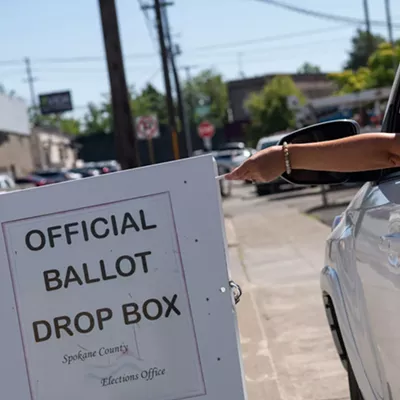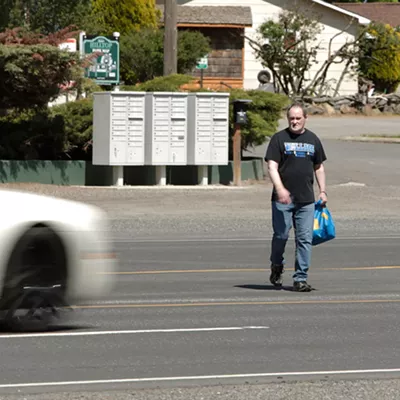With rain spitting intermittently from a gray sky, the bone lady spent a chilly Sunday on a downtown Spokane street corner more often haunted by beggars or scam artists who are trying to escape the past, not preserve it.
At the corner of Third and Division, Dr. Sarah Keller, professor of forensic science at Eastern Washington University, sat in the shaft of shadow underneath Interstate 90 where it leaps across downtown Spokane on massive concrete pillars.
Just beyond Keller, several of her current and former anthropology students sifted dirt through wire screens, searching for bones or other signs of humanity's past. And just beyond the students, at the bottom of a neat hole carved into Division Street, lay a wooden coffin.
Last week, construction workers involved in the massive repaving of Third Avenue discovered bones in the dirt under the street. Soon, Keller, the bone lady, was called.
People who call her about bones want to know three things, Keller says: "Are they human or animal? Are they old? Did something traumatic happen?"
The bones under the street appear to be human arm bones, she says, and they appear to have been buried for quite some time.
They are not ancient, however, probably dating to the late 1800s, Keller guesses. She and her students were minutes away from calling it quits last Friday, when a small backhoe working at the scene struck the corner of the coffin.
"It was 10 minutes to five," Keller says. The find delayed paving at the site for nearly a week as people figured out what to do.
Bones, especially old bones, seem to touch some deep sense that if they are studied intently enough, rolled through our hands often enough, stories from the past will begin to sing to us.
News crews and amateur historians swarmed the site and seemed confused that Keller wasn't digging out the coffin.
The bones, she says, are too recent for carbon dating to be useful. Judging by the square nails that still hold the fragile, decaying coffin together, she guesses the bones came from early settler days.
Two churches used to be at the intersection -- one where Spokane icon Dick's Hamburgers is now. Two funeral homes were nearby. The original Sacred Heart Hospital was close enough that the ground could have been a potter's field for the nameless dead, she says.
And old maps show a homestead where I-90 now empties onto Division Street. Just up the hill, where a spring-fed creek still burbles in one of the city's oldest parks, there was a mission that housed and preached to Native Americans.
The bones, Keller says, could come from any of those. By Sunday, she appeared weary.
"This stuff won't tell us much," she says, sifting her hand through box of corroded nails and other artifacts. "If we haul the coffin out and there is a skeleton in it, the only mystery is the name. And unless there's a nametag pinned to the breastbone, we could haul the coffin out and be none the wiser."
Randy Abrahamson, historic preservation officer for the Spokane Tribe, was among the first people Keller called. He agrees the remains should not be disturbed.
"Is it a native burial site? We can't determine that," Abrahamson says. Given the nearby mission, he says, it could very well be an American Indian buried in the coffin. But Abrahamson won't risk disturbing other remains that may be nearby.
"If we dig him up, maybe we get a lot more than one. I agree with Sarah -- let's cap it," Abrahamson says.
But the history?
He laughs. "We know the history of Spokane. We try to get federal agencies to listen to us and make sure excavations are watched."
By Tuesday, city and state agencies sorted through the issue and agreed: The past once more would be buried.
Publication date: 06/16/05















